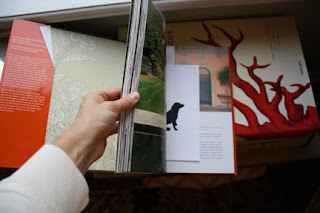 Hello! I hope you all had a lovely holiday weekend. We sure did. I got to spend most of the weekend engaged in two of my favorite hobbies: cooking and eating.
Hello! I hope you all had a lovely holiday weekend. We sure did. I got to spend most of the weekend engaged in two of my favorite hobbies: cooking and eating.For Thanksgiving dinner, I got the big-girl job of bringing the appetizers. I always am looking for an excuse to make my very favorite, the king of the appetizers: shrimp cocktail. I am mildly allergic to shellfish, but I love shrimp cocktail so much that I am willing to throw caution (and rationality) to the wind in order to eat just a few of these little suckers now and then. But there is such a thing as bad shrimp cocktail (and I don't just mean the kind that gives you food poisoning), when the shrimp are rubbery or the sauce is store-bought and overly sweet, and, in those cases, I am always sorely disappointed to have risked anaphylaxis. I have finally perfected my own recipe, and it is delicious and foolproof.
The trick with the shrimp is to buy the frozen uncooked easy-peel shell-on kind. The precooked ones always seem to end up rubbery or tough, and I find the shells help them cook evenly and taste fresh. All shrimp are frozen in the fishing process, so if you buy them unfrozen, you are just paying a premium for the grocery store to thaw them for you. And I insist on making my own sauce, which, while simple, makes all the difference between a mediocre cocktail and one that is worth risking hives over.
Shrimp Cocktail Sauce
1 cup ketchup
1/2 cup Heinz chili sauce
1 tablespoon horseradish (found in the refrigerator section)
1/2 teaspoon Worcestershire sauce
2 tablespoons fresh lemon juice
1/2 teaspoon Tabasco
1-2 cloves garlic, minced or pressed through a garlic press
1 tablespoon fresh cilantro, chopped
Combine all the ingredients in a bowl. Refrigerate for up to a week.
Cocktail Shrimp
Thaw the shrimp for about 10 minutes, by placing them in a colander under cold running water. Meanwhile, bring a large pot of water to a boil. Boil the shrimp for 3-5 minutes, until they are bright pink, and the flesh is no longer translucent. Meanwhile, rinse the colander thoroughly. When the shrimp are cooked, return them to the colander and run fresh, cold water over them, until they are cooled. Peel the shells off, leaving the tails attached. Serve with lemon wedges and cocktail sauce. Yumma!





















































